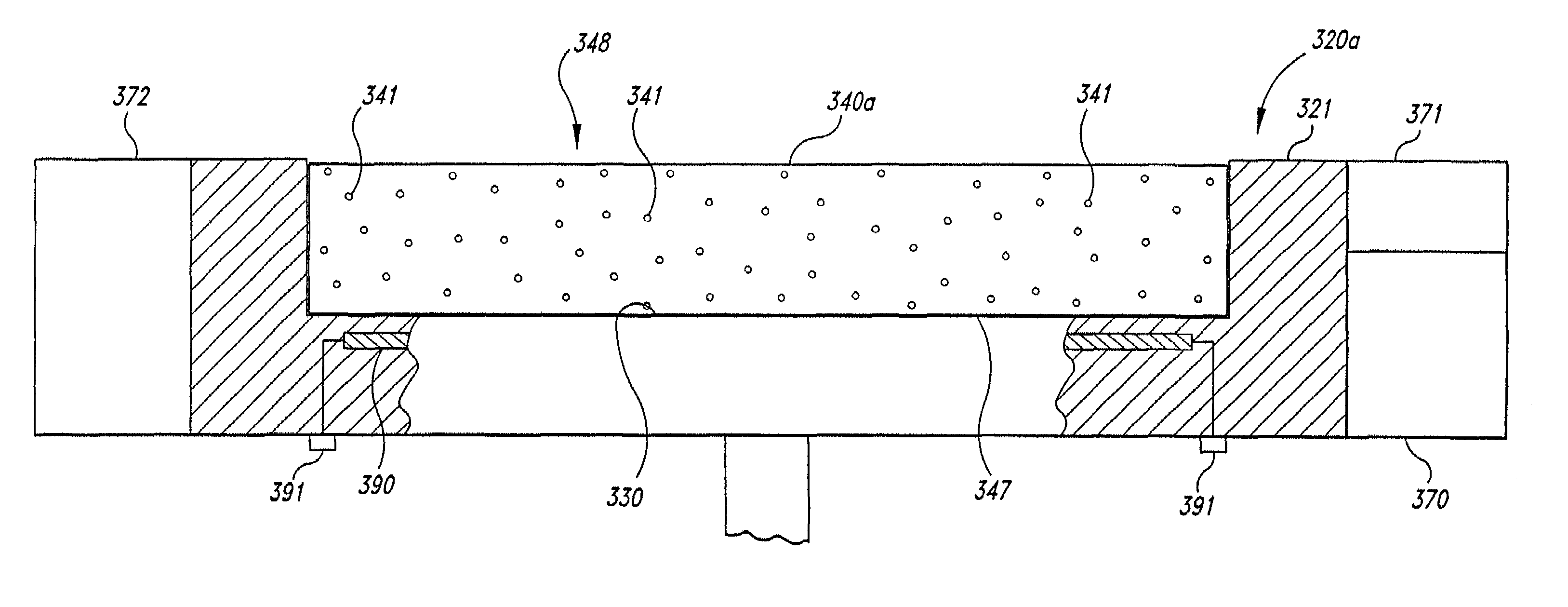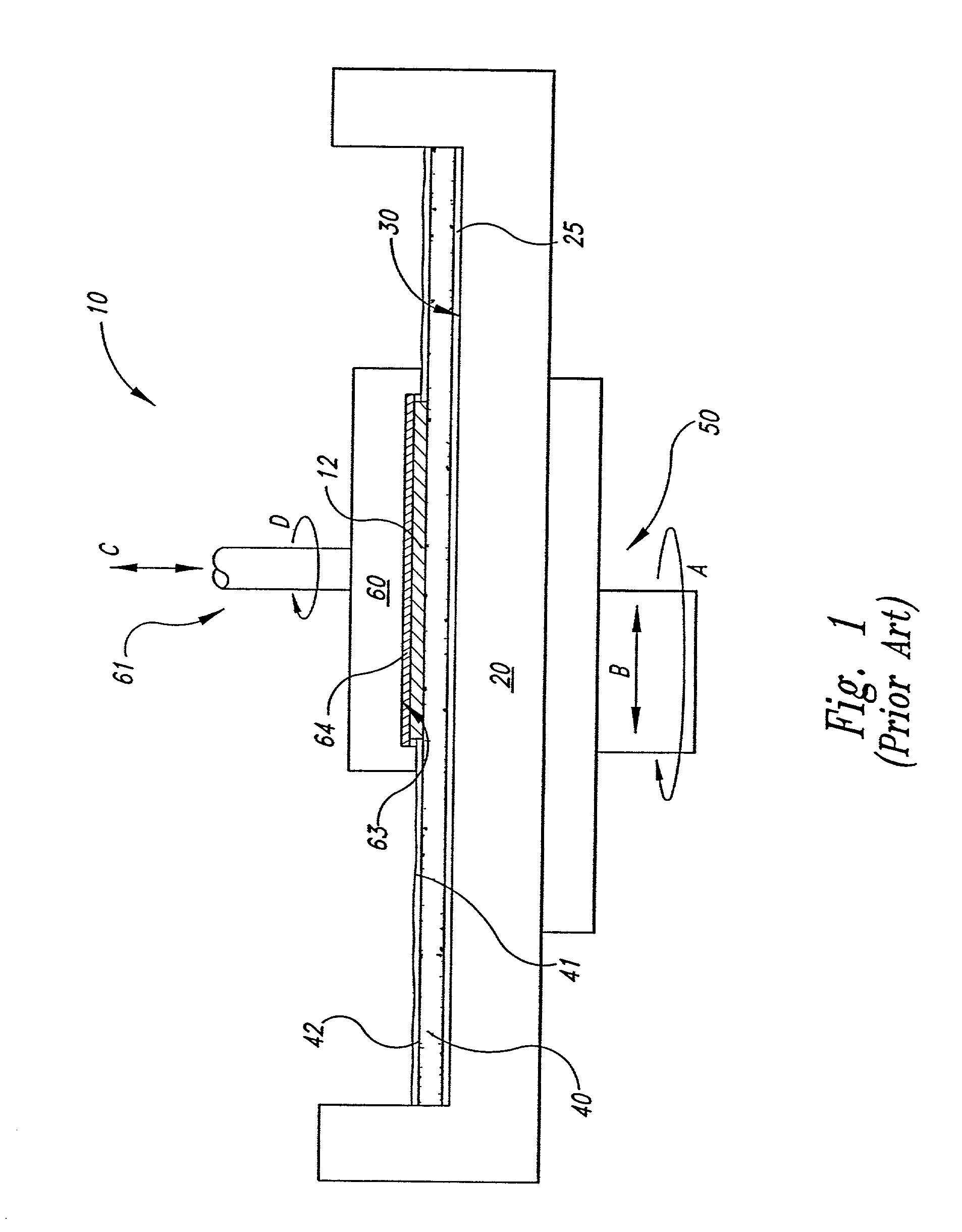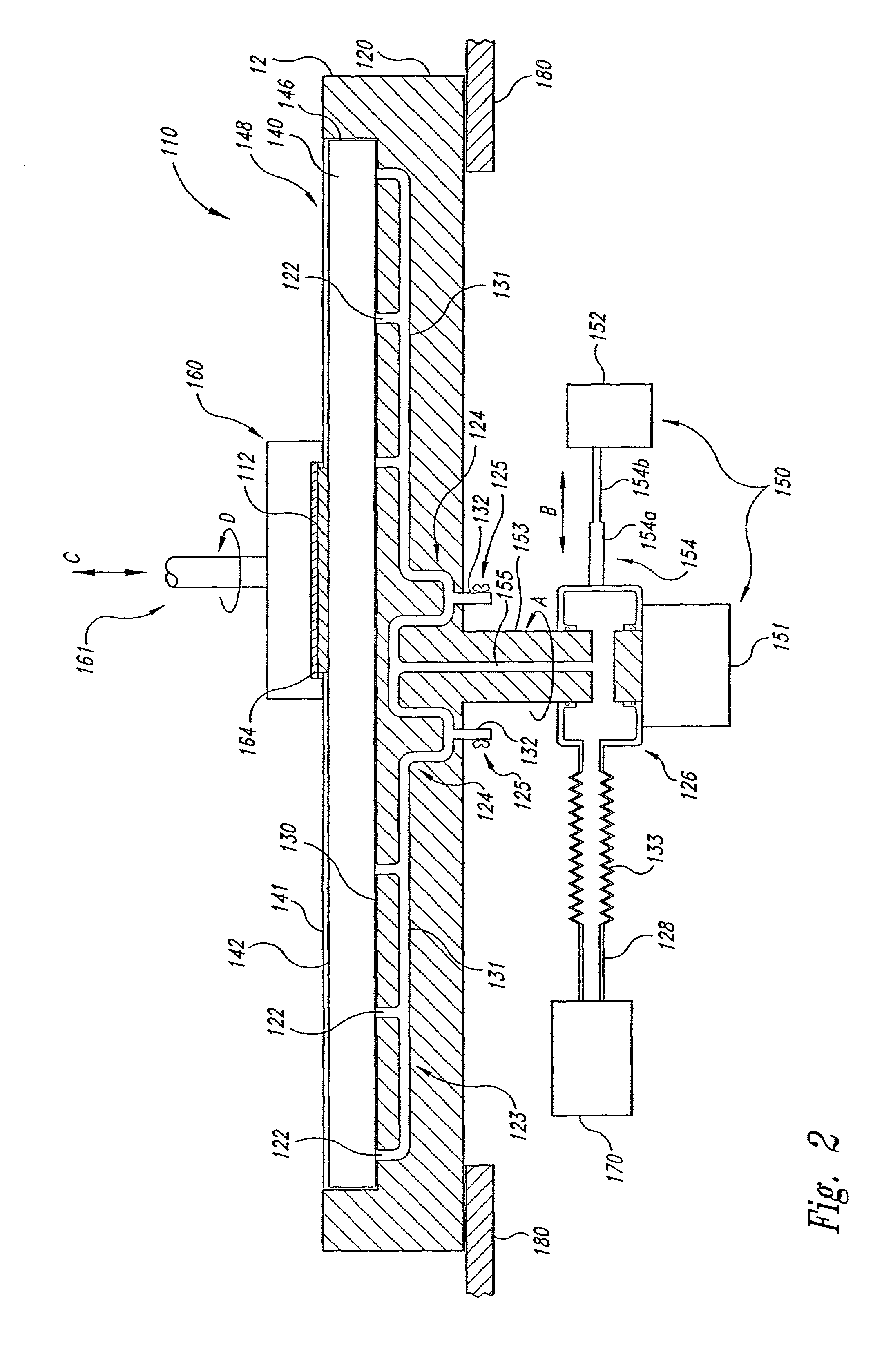Method and apparatus for releasably attaching a polishing pad to a chemical-mechanical planarization machine
a technology of chemical-mechanical planarization machine and polishing pad, which is applied in the direction of work holders, grain treatment, manufacturing tools, etc., can solve the problems of affecting the quality of polishing,
- Summary
- Abstract
- Description
- Claims
- Application Information
AI Technical Summary
Benefits of technology
Problems solved by technology
Method used
Image
Examples
Embodiment Construction
[0022]The present invention is directed toward methods and devices for attaching a polishing pad to a platen of a chemical-mechanical planarization machine. The device may include a vacuum system that releasably attaches the polishing pad to the platen such that the polishing pad may be easily removed and / or replaced, or may be incrementally advanced over the platen. Many specific details of certain embodiments of the invention are set forth in the following description and in FIGS. 2–7 to provide a thorough understanding of such embodiments. One skilled in the art, however, will understand that the present invention may have additional embodiments and that they may be practiced without several of the details described in the following description.
[0023]FIG. 2 illustrates a CMP apparatus 110 having a platen 120 and a planarizing medium 148. In the embodiment shown in FIG. 2, the planarizing medium 148 includes polishing pad 140 releasably attached to the platen 120, and in other emb...
PUM
| Property | Measurement | Unit |
|---|---|---|
| vacuum pressure | aaaaa | aaaaa |
| electromagnetic attractive force | aaaaa | aaaaa |
| conductive | aaaaa | aaaaa |
Abstract
Description
Claims
Application Information
 Login to View More
Login to View More - R&D
- Intellectual Property
- Life Sciences
- Materials
- Tech Scout
- Unparalleled Data Quality
- Higher Quality Content
- 60% Fewer Hallucinations
Browse by: Latest US Patents, China's latest patents, Technical Efficacy Thesaurus, Application Domain, Technology Topic, Popular Technical Reports.
© 2025 PatSnap. All rights reserved.Legal|Privacy policy|Modern Slavery Act Transparency Statement|Sitemap|About US| Contact US: help@patsnap.com



